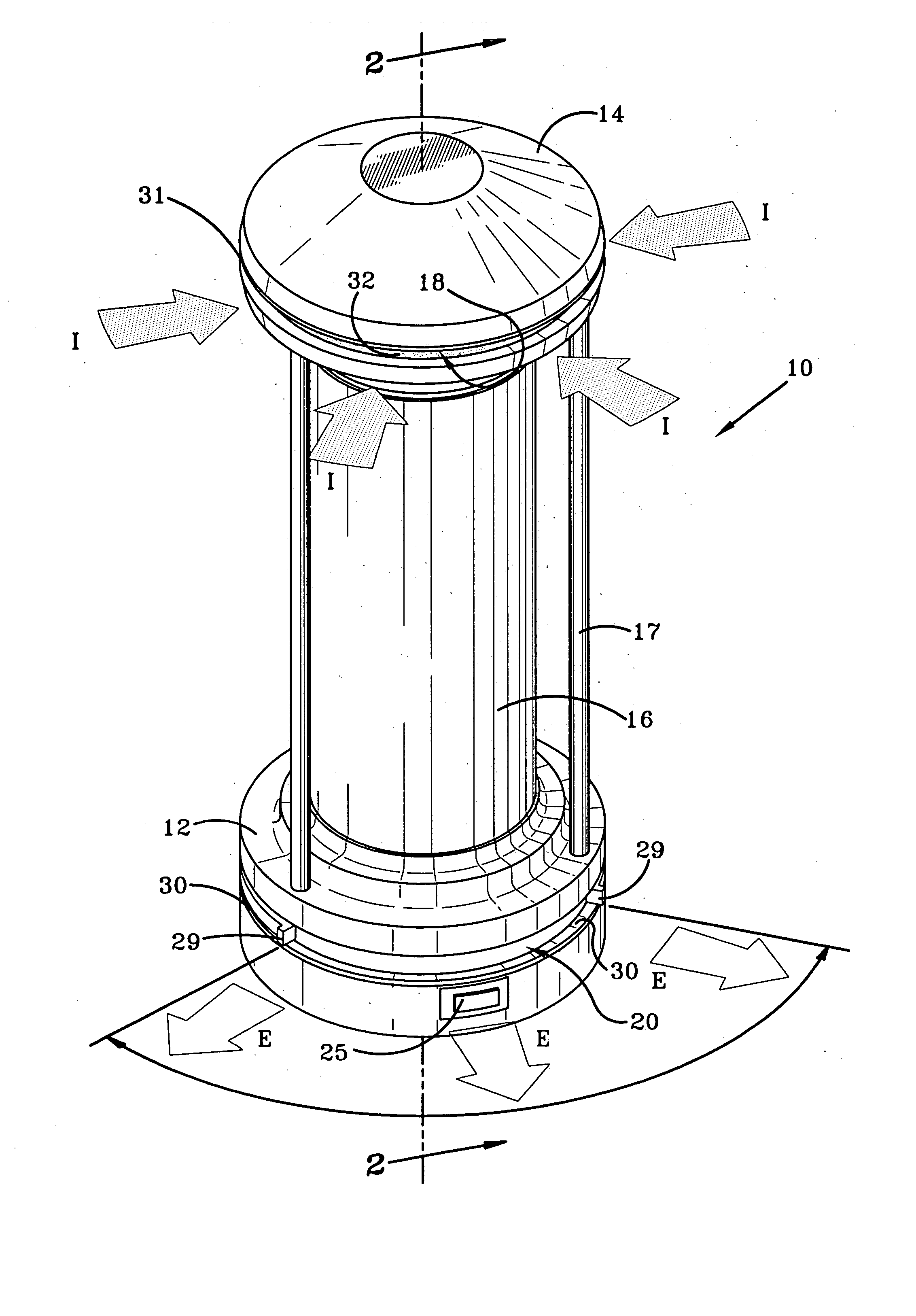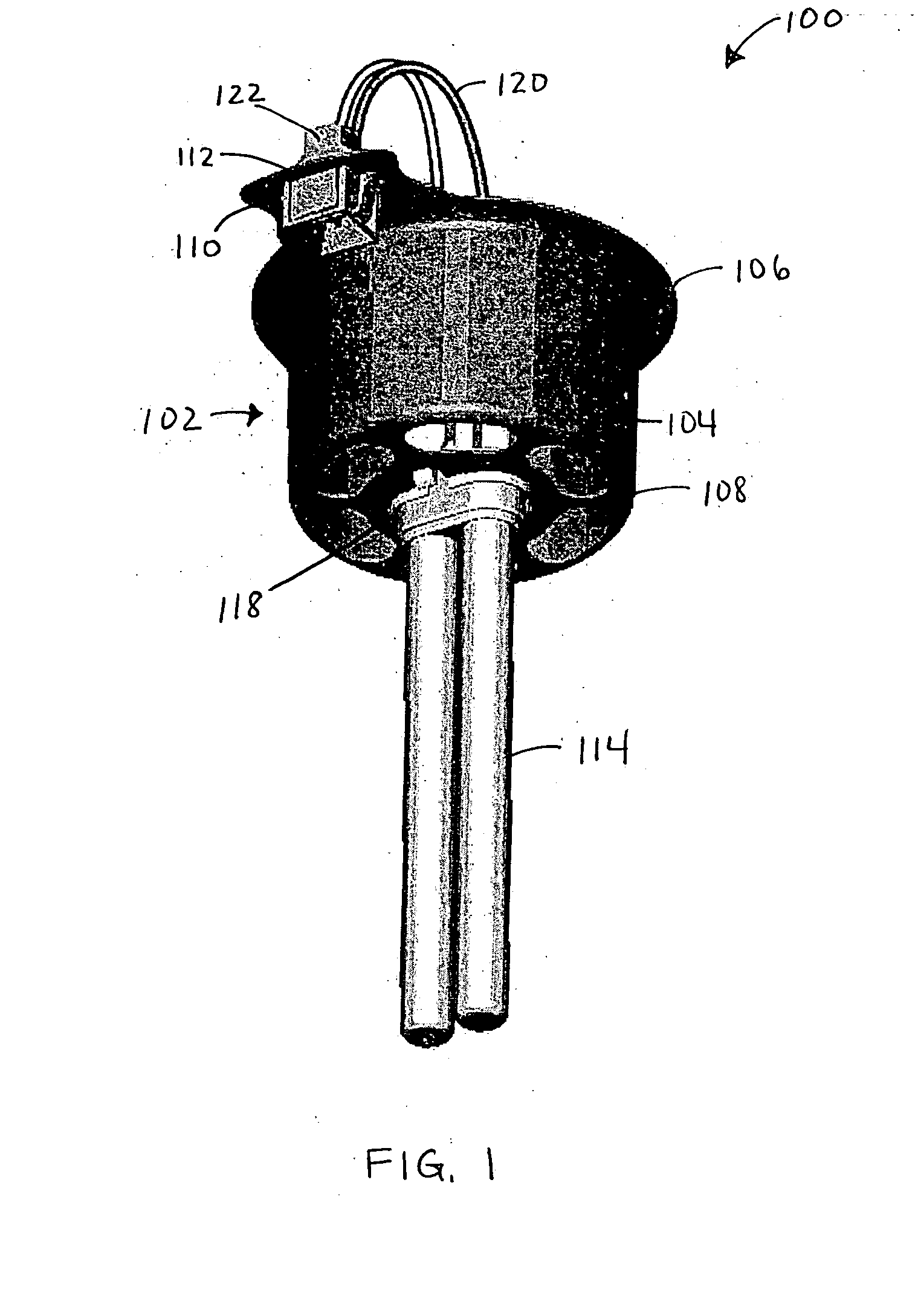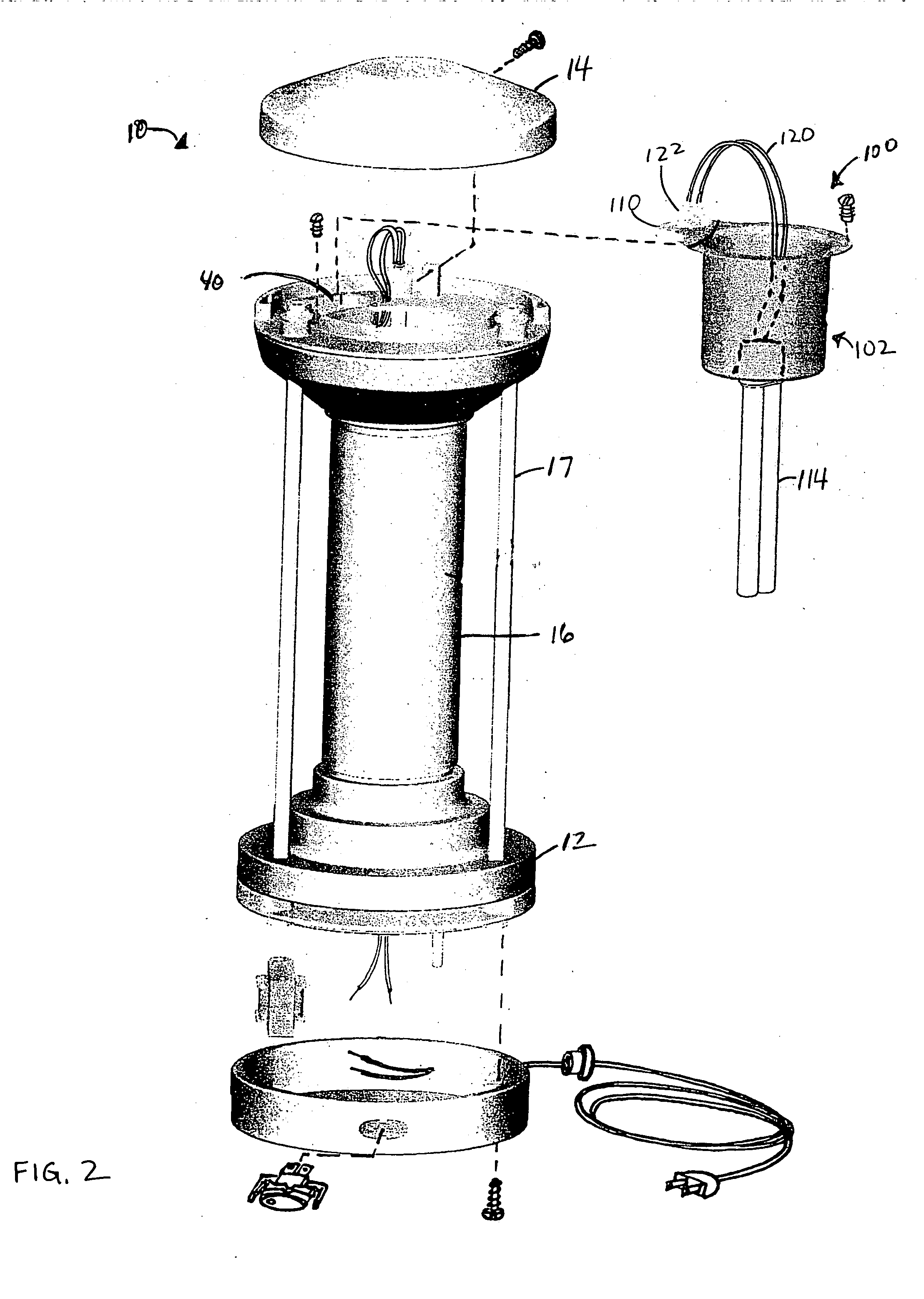Light module for air treatment units
a technology of air treatment unit and light module, which is applied in the direction of lighting support devices, heating types, instruments, etc., can solve the problems of difficult safe operation and maintenance of systems employing the technology, pain in the eye, and mild to severe redness of the skin, so as to prevent exposure to uv light, block much of uv-c energy, and maintain the correct airflow rate
- Summary
- Abstract
- Description
- Claims
- Application Information
AI Technical Summary
Benefits of technology
Problems solved by technology
Method used
Image
Examples
Embodiment Construction
[0015] Referring now to FIG. 1, a light module according to this invention is shown and designated generally by the numeral 100. Light module 100 includes a housing 102 defined by a sidewall 104 extending between a lip 106 and baffle 108. A connector flange 110 with an aperture 112 is formed as part of housing 102, and preferably is formed in lip 106, as shown.
[0016] A UV light source 114 is fixed to baffle 108. As used herein, “fixed” is not necessarily to be understood as defining that UV light source 114 is directly fixed to baffle 108. Rather, in preferred embodiments, such as that shown, UV light source 114 is bonded to light source socket 116 (shown in FIG. 3) to be integral therewith, light source socket 116 is bonded to one side of baffle 108, and UV light source 114 extends through an aperture 118 in baffle 108 to extend on the other side thereof. Although not directly fixed to baffle 108, UV light source is considered “fixed” thereto inasmuch as its position is substantia...
PUM
 Login to View More
Login to View More Abstract
Description
Claims
Application Information
 Login to View More
Login to View More - R&D
- Intellectual Property
- Life Sciences
- Materials
- Tech Scout
- Unparalleled Data Quality
- Higher Quality Content
- 60% Fewer Hallucinations
Browse by: Latest US Patents, China's latest patents, Technical Efficacy Thesaurus, Application Domain, Technology Topic, Popular Technical Reports.
© 2025 PatSnap. All rights reserved.Legal|Privacy policy|Modern Slavery Act Transparency Statement|Sitemap|About US| Contact US: help@patsnap.com



